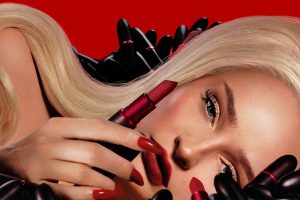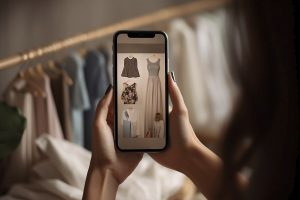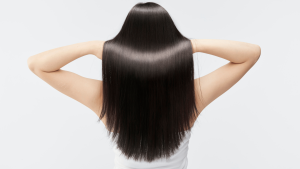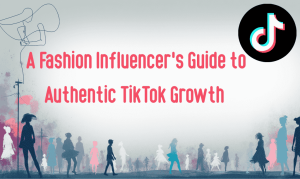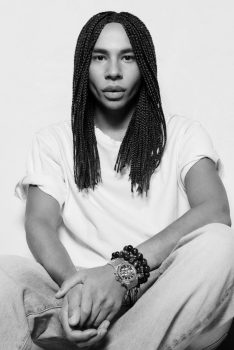Visual Kei fashion— a subculture originating from Japan’s rock scene in the 1980s— combines music, identity and individual style to make a statement. A unique fusion of androgyny, glam and gothic elements that continues to influence global fashion, here is an overview of the history, evolution, and impact of Visual Kei fashion.
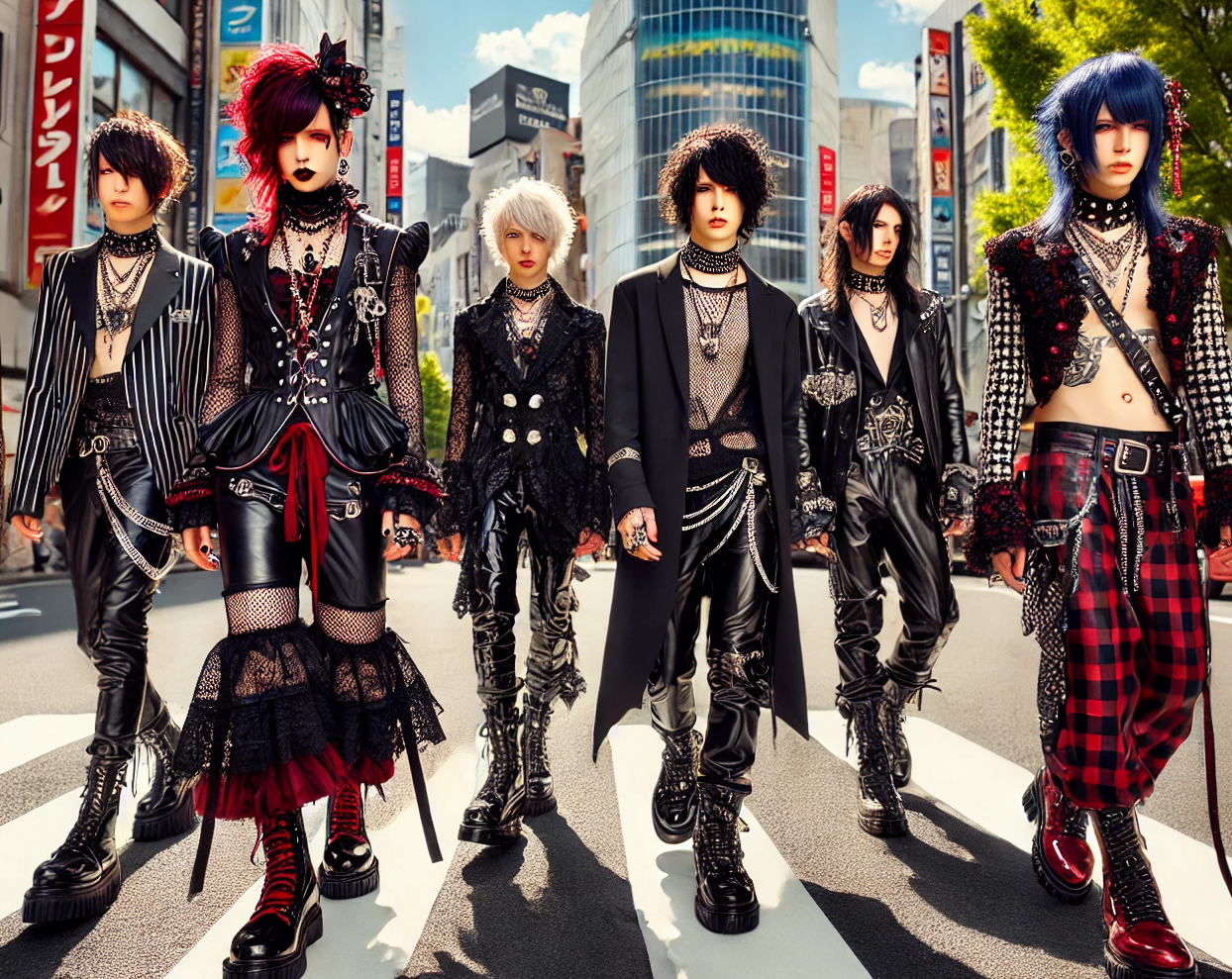
Visual Kei fashion— a visual subculture originating from Japan’s rock scene in the 1980s— combines music, identity and individual style to make a statement.
Visual Kei fashion is a bold and expressive movement that originated in Japan during the 1980s, closely tied to rock and metal music. Pioneered by bands like X Japan, Visual Kei combines elaborate costumes, bold make-up and dramatic hairstyles that reflect the emotional intensity of the music. Unlike traditional trends, Visual Kei is rooted in performance and rebellion, encouraging musicians and fans alike to blur gender norms and embrace individuality.
Over time, Visual Kei evolved beyond the music industry and began influencing fashion. Its combination of gothic, glam rock, punk and Victorian elements inspired fashion designers such as John Galliano and Vivienne Westwood, who incorporated similar theatrical and androgynous aesthetics into their collections. The movement also found a place in youth subcultures in Europe and the United States, where fans embraced the style for its creative freedom and visual drama.
This style is often seen at Harajuku fashion events and Lolita gatherings and has influenced pop culture- with notable examples seen in music videos, anime conventions, and cosplay communities. Today, Visual Kei continues to be a symbol of self-expression and artists frequently incorporate the elaborate outfits into their performance, showcasing its dramatic, androgynous appeal. Globally, it has become a part of alternative fashion movements, with dedicated boutiques like Sex Pot ReVeNGe in Tokyo or Algonquins in Harajuku and Osaka offering pieces specifically catering to this aesthetic.
Visual Kei fashion: History and evolution
Visual Kei fashion emerged in Japan during the 1980s, closely tied to the country’s burgeoning rock and metal music. The movement was largely pioneered by bands like X Japan, whose flamboyant and theatrical aesthetics set a new standard for rock musicians and their fans alike. Combining elements of punk, glamour, rock, goth, and traditional Japanese fashion, Visual Kei was not just about the music—it was about making a striking visual statement. Members of X Japan, especially drummer Yoshiki and vocalist hide, became icons of the style, known for their elaborate hairstyles, heavy makeup, and androgynous costumes, marking the beginning of a new subcultural fashion identity in Japan.
Throughout the 1990s, Visual Kei evolved rapidly, expanding beyond the music industry and becoming a significant cultural movement. Bands such as Malice Mizer and Dir en Grey introduced more gothic and classical European influences into the style. Malice Mizer, in particular, under the creative direction of guitarist Mana, brought Victorian and Rococo themes into Visual Kei fashion, combining dramatic silhouettes, lace, corsets, and frilled shirts with dark romanticism. Mana later founded the fashion label Moi-même Moitié in 1999, which played a pivotal role in shaping the Gothic Lolita sub-style—a fashion genre that overlapped with Visual Kei and helped elevate it into haute couture.

Visual Kei has established itself as a resilient fashion subculture, continuously reinventing itself while retaining its core ethos of self-expression and theatricality
The 2000s marked a period of diversification within the Visual Kei scene. Sub-genres like Oshare Kei [known for its colourful, playful aesthetic] and Angura Kei [which retained a more underground, traditional Japanese influence] began to emerge. Bands like An Cafe popularised Oshare Kei with bright colours, quirky prints, and punk-meets-Harajuku styling, while artists like Kagrra, incorporated kimono-inspired outfits and historical references into their performance wear. These developments reflected a shift from purely Western-inspired looks to a fusion of global and Japanese aesthetics, appealing to a broader audience.
As the 2010s unfolded, Visual Kei continued to develop, though it moved into niche circles. While its mainstream popularity in Japan declined, international interest in the style surged, fuelled by internet communities and anime culture. Designers like h.Naoto gained prominence during this period for creating fashion that bridged Visual Kei, Gothic, and cyberpunk styles. His collections featured distressed fabrics, layered garments, and asymmetrical cuts that appealed to both musicians and fans. Simultaneously, fashion brands like Alice and the Pirates offered fantastical, baroque interpretations of Visual Kei, aligning it with the growing global interest in Japanese subcultures.
By the 2020s, Visual Kei had established itself as a resilient fashion subculture, continuously reinventing itself while retaining its core ethos of self-expression and theatricality. The rise of social media platforms like Instagram, TikTok, and YouTube allowed Visual Kei enthusiasts to share their fashion looks and connect with like-minded individuals. Young designers have continued to reinterpret classic Visual Kei, combining it with streetwear, gender-fluid fashion, and digital influences. This new era has seen a fusion of nostalgia for 90s aesthetics with modern materials and silhouettes, ensuring that Visual Kei remains both historically rich and forward-looking.
Despite its fluctuating mainstream presence, Visual Kei fashion has left an enduring legacy on Japanese pop culture and global alternative fashion. From the dramatic runway-inspired costumes of the 80s to the diversified sub-styles of the 2000s and the internet-powered revivals of the 2020s, Visual Kei reflects a dynamic evolution of identity, rebellion, and artistry. As it continues to influence both independent fashion designers and fashion labels, Visual Kei is a testament to the possibilities of visual self-reinvention.
Visual Kei: Key elements and aesthetic features
Visual Kei fashion is distinguished by its eclectic mix of textures, silhouettes, and historical influences, often resulting in an elaborate, theatrical appearance. Common clothing items include lace blouses, leather jackets, military-style uniforms, corsets, and flared trousers.
Victorian and Gothic aesthetics are prevalent, reflected in the use of ruffled collars, voluminous skirts, and long coats with intricate detailing. Visual Kei fashion often borrows from both Western aristocratic and punk styles, fusing elegance with rebellion. Brands like Moi-même-Moitié and h.Naoto have become closely associated with these elements, designing outfits that are worn by both musicians and fans alike.

Visual Kei fashion has left an enduring legacy on Japanese pop culture and global alternative fashion.
Makeup and hairstyling are central to the Visual Kei identity, transforming artists into characters that often blur the line between fantasy and reality. Heavy eyeliner, coloured contact lenses, foundation, and bold lipstick—often black, red, or deep purple—are commonly used to accentuate facial expressions and create a dramatic impact. Hairstyles are equally bold, featuring teased volume, asymmetrical cuts, brightly dyed hair, and wigs.
Celebrities like hide (X Japan) and Mana (Malice Mizer) set early standards for expressive looks, while more recent artists such as Ruki (the GazettE) and Kamijo (Versailles) continue the tradition with elaborate hair and makeup. Accessories like chokers, gloves, top hats, and ornate jewellery complete the look. Androgyny is a defining trait of Visual Kei, with artists intentionally combining masculine and feminine characteristics in their fashion and performance. This fluid approach to gender presentation allows for self-expression and challenges conventional norms in both fashion and music.
Theatricality goes hand in hand with this, as Visual Kei performers frequently transform concerts into dramatic spectacles. Mana is one of the most iconic figures in this context, consistently appearing in elegant, doll-like dresses and refusing to speak in public, further enhancing his mystique. This fusion of androgyny and theatrical flair shapes the aesthetic of Visual Kei and invites fans to engage in similar forms of self-transformation and artistic identity.
Influential Visual Kei bands and icons
Visual Kei bands have been central to shaping the fashion trends associated with the movement, beginning with the pioneering group X Japan in the 1980s. Known for their explosive sound and even more explosive visuals, X Japan combined heavy metal with flamboyant costumes. Band members like Yoshiki and hide popularised voluminous hairstyles, leather outfits, and dramatic makeup.
As the movement progressed into the 1990s, Malice Mizer introduced a refined, gothic and aristocratic aesthetic. Under the visual direction of guitarist Mana, the band incorporated Rococo and Victorian influences, complete with corsets, lace, and elaborate stage sets. Mana’s influence extended beyond the band into fashion with the founding of his brand Moi-même-Moitié, which became iconic in both Visual Kei and Gothic Lolita circles.
Moving into the 2000s and beyond, bands like Dir En Grey, the GazettE, and Versailles continued to evolve Visual Kei fashion in distinct directions. Dir En Grey shifted the aesthetic to a darker, more industrial and avant-garde style, often using distressed clothing, minimalism, and psychological horror motifs to match their music’s intensity.
In contrast, the GazettE popularised punk, goth, and street fashion, influencing a new generation of fans with their accessible yet edgy visuals. Versailles, led by Kamijo, brought back the opulence of Malice Mizer’s era, combining baroque fashion with modern metal elements—with embroidered coats, high collars, and lavish accessories. Each of these bands influenced their fan bases and left an impact on Japanese street fashion, fashion magazines, and designers who borrowed from Visual Kei’s dramatic flair. Through their evolving styles, these bands have ensured that Visual Kei remains a living, changing fashion movement as much as a musical one.
How to incorporate Visual Kei into the modern wardrobe
Can I wear Visual Kei-inspired clothing without going full costume?
Absolutely. Visual Kei fashion doesn’t have to be all or nothing. Start with statement pieces like a distressed jacket, platform boots, or layered necklaces. Pair them with neutral basics—like black jeans or plain tops—to keep the look wearable while still showcasing your style.
What are the easiest Visual Kei elements to add to an everyday outfit?
Focus on accessories and layering. Items like studded belts, fingerless gloves, chokers, lace-trim scarves, or asymmetrical cardigans can give a modern outfit that Visual Kei edge. Black eyeliner or bold makeup can nod to the style without changing your entire wardrobe.
How can I make Visual Kei fashion look more mature or office-appropriate?
Opt for toned-down colours like black, burgundy, and grey, and go for tailored silhouettes with edgy detailing. For instance, wear a fitted blazer with subtle chains or embroidery, or sleek trousers with platform shoes. Keep the balance: edgy elements + clean lines = modern Visual Kei chic.
Are there Visual Kei fashion pieces that work across seasons?
Yes. Think of longline coats, layered shirts, boots, and dark-toned accessories. These are versatile and can be styled differently across seasons. For summer, use mesh tops, sleeveless layers, and lightweight fabrics that keep the essence but stay breathable.
Can I mix Visual Kei with other fashion styles like streetwear or minimalism?
Definitely. Visual Kei is inherently experimental. Blend a Visual Kei hoodie with joggers and sneakers for a streetwear twist, or combine a structured ornate jacket with minimal pieces for a high-contrast look. The key is balance—let one element shine and build around it.
Visual Kei elements on the runway
While Visual Kei collections are rare, elements of the style often appear in collections from luxury fashion brands, particularly those with a focus on androgynous or gender-fluid aesthetics. Gucci frequently shows ruffled shirts, high-waist trousers and dramatic coats.
Alexander McQueen’s collections feature dramatic silhouettes, intricate details, and a touch of the theatrical. And, with its focus on rock ‘n’ roll and a rebellious spirit, Saint Laurent leather jackets, lace detailing, and androgynous silhouettes can be styled in an Visual Kei-inspired way. It’s important to note that these fashion brands don’t create collections dedicated to Visual Kei.
Historical fashion — Visual Kei fashion aligns with the broader revival of historical fashion on the runway. Iconic fashion designers such as Alexander McQueen, Vivienne Westwood, and Gucci have incorporated the frock coats, high-neck blouses, and intricate embroidery, into their collections. The emphasis on layering, ornate detailing, and juxtaposition of masculine and feminine elements mirrors the essence of Visual Kei.
Androgyny statement — One of Visual Kei’s most compelling contributions to the runway is its embrace of androgyny. The style’s gender-neutral silhouette—marked by fitted vests, breeches, and ruffled shirts—challenges traditional fashion norms. Runways at events like Tokyo Fashion Week and Paris Men’s Fashion Week have featured models in Visual Kei-inspired outfits, showcasing the versatility of modern fashion. Brands like Thom Browne and Comme des Garçons have incorporated its balance of sharp tailoring and whimsical fashion accessories, such as top hats and pocket watches, into their designs.
Modernising Visual Kei — While traditional Visual Kei fashion adheres to a specific aesthetic rooted in history, its runway adaptations take creative liberties to modernise the style. Fashion designers experiment with luxurious fabrics such as velvet, brocade, and silk, reimagining Visual Kei staples in contemporary cuts. Structured blazers paired with wide-leg shorts, metallic accents, and bold colour palettes bring a fresh perspective to the classic look. Accessories like oversized cravats and embellished knee-high socks are exaggerated to create dramatic visual impact, highlighting Visual Kei’s theatrical look.
Cultural Crossover and Global Appeal — The rise of Japanese street fashion on the global stage has further propelled Visual Kei elements into the spotlight. The style’s crossover appeal is evident in collaborations between Japanese fashion designers and Western fashion brands. Tokyo Girls Collection, a leading platform for Japanese fashion, showcases Visual Kei-inspired looks. Beyond Japan, Visual Kei’s influence is felt in high-profile fashion shows that celebrate diversity and unconventional beauty.
Jasmeen Dugal is Associate Editor at FashionABC, contributing her insights on fashion, technology, and sustainability. She brings with herself more than two decades of editorial experience, working for national newspapers and luxury magazines in India.
Jasmeen Dugal has worked with exchange4media as a senior writer contributing articles on the country’s advertising and marketing movements, and then with Condenast India as Net Editor where she helmed Vogue India’s official website in terms of design, layout and daily content. Besides this, she is also an entrepreneur running her own luxury portal, Explosivefashion, which highlights the latest in luxury fashion and hospitality.






